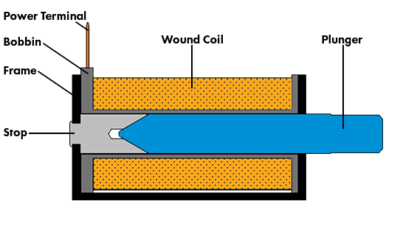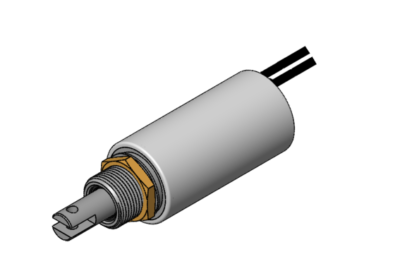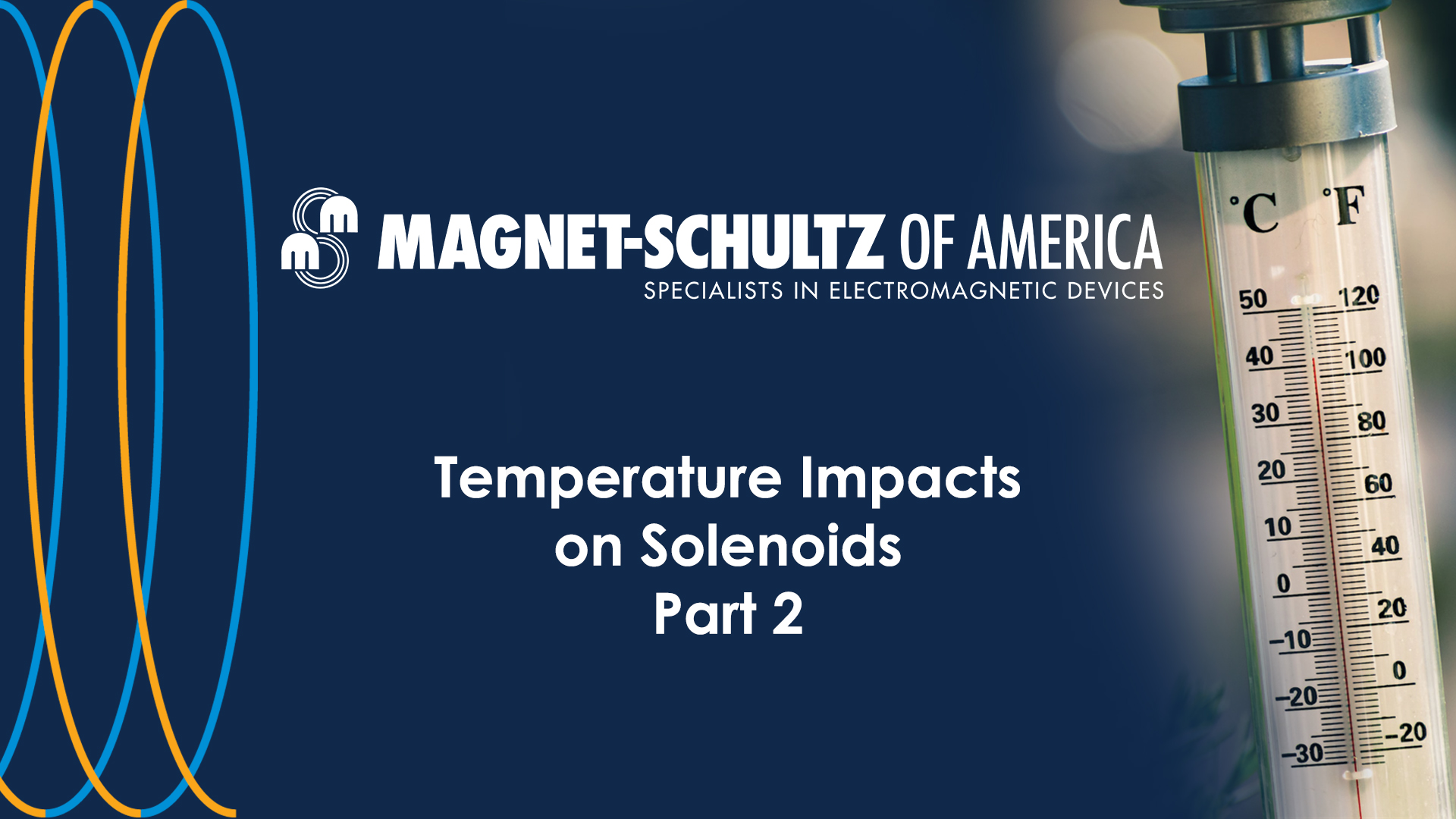Magnet-Schultz of America’s new Solenoid 101 series of blogs is designed to inform about the basic functions of solenoid products. We will start by tackling the fundamentals of solenoid terminology, function, and design. Future posts in the series will describe other MSA product categories and applications in a similar fashion, providing a quick and easy grasp of concepts. We will continue posting our more technical blogs, but want to make the full breadth of solenoid knowledge available to our visitors.
What is a Solenoid?
A solenoid is an electromagnetic device used to convert electrical energy into linear mechanical energy. The vital components of a solenoid are conductive wire, a bobbin, a ferrous plunger, a stop, and a frame. A coil of wire is wound around the bobbin. This bobbin has a center shaft through which the plunger travels, until it makes contact with the stop. The assembly is contained by the frame which can also amplify the magnetic force of the unit if it is made out of ferrous material. When power is supplied to the coil, a magnetic flux is generated and the plunger will retract into the shaft of the unit. The force and distance of this retraction are the solenoid’s stroke characteristics.

Cross-Section
Key Characteristics of Operation
- Basic solenoids are not polarity sensitive. A solenoid will function the same way regardless of the flow of electricity.
- Solenoids have a duty cycle. Solenoids can only remain powered for a limited amount of time before the coil overheats. The duty cycle noted for a unit lets you know how long the unit can be powered on and how long it must then remain off before it can be powered again. The three common duty cycle categories are continuous, intermittent, and pulse. Definitions for each duty cycle can be found in the glossary.
- Solenoid force has a curve. The highest force is exerted when the plunger is fully retracted and seated against the stop. This is called the “hold force”. The farther away the plunger is from the stop, the less affected the plunger will be by the magnetic flux of the coil.
- Solenoids can be made to perform many types of linear operations. By putting a small hole in the stop and extending the plunger with a push rod it could perform a push function. A spring could be added to allow the unit to return to its original position after actuation. More complex modifications can be made to create latching, bi-directional, proportional, and other types of actuators.

Push Solenoid with Return Spring
Design and Modification
Generally, the most efficient coil designs will have as many wire turns as possible in the given space, with a wire diameter large enough to accommodate the power supply without overheating. The coil’s effectiveness can also be modified by altering the design and material of other components.
The ferrous material used in the frame concentrates the magnetic flux of the coil. A fully enclosed tubular unit will have more strength than an open frame unit, even with identical coil windings.

Tubular Frame Type
Plunger material and shape can also have dramatic effects. A flat plunger will have a high hold force but a shorter stroke length while a conical plunger will have a longer stroke length and a lower hold force.

Plunger Shape Characteristics
And now you understand the basic principles of solenoid function and design! Have questions? Post a comment below and we will be happy to clarify. Suggestions for future topics are welcome! We would like to make sure that MSA is your source for solenoid and electromagnet information of every technical level. You can also submit inquiries through our contact page or call us at 630.789.0600.
Magnet-Schultz of America specializes in custom engineering and manufacturing. Our engineers design with every performance aspect of the solenoid in mind. Function, size, longevity, power consumption, and cost are all considered. If you have any questions related to solenoid sourcing or manufacturing, please feel free to contact us. Browse past blogs for a more in-depth look at solenoid functions and subscribe to the notifications for future posts!







It was really interesting when you talked about how a solenoid is an electromagnetic device that is used to convert electric energy into mechanical energy. I would imagine that solenoids could be used to pump water around in something like a water treatment plant. I would guess that things like turbines and other systems in a water treatment plant would need to be powered with mechanical energy.
I appreciate that you explained how numerous different linear processes may be made to work on solenoids. I think this will be essential for my husband who’s seeking a proper solenoid valve. I’ll make sure that he finds a reliable company that offers this.
Many different linear actions can be performed using solenoids by drilling a small hole in the stop and extending the plunger with a push rod, as you mentioned. I’ll definitely share this with my brother because he’s been talking about making his own solenoid coils for a project. I’ll also look at professional engineering services that can aid him with this. I appreciate you sharing!